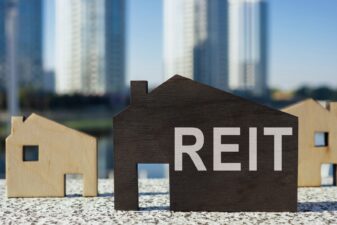Every quarter I take a look at the top FTSE 100 companies in each of the index’s 10 industry sectors, to see how they shape up as a potential ‘starter portfolio’.
The table below shows the top 10 heavyweights and their valuations, based on forecast 12-month price-to-earnings (P/E) ratios and dividend yields.
| Company | Industry | Recent share price (p) |
P/E | Yield (%) |
|---|---|---|---|---|
| ARM Holdings (LSE: ARM) | Technology | 1,026 | 28.8 | 1.0 |
| BAE Systems | Industrials | 501 | 12.6 | 4.3 |
| British American Tobacco | Consumer Goods | 4,083 | 17.6 | 4.1 |
| GlaxoSmithKline (LSE: GSK) | Health Care | 1,414 | 16.3 | 5.7 |
| HSBC Holdings (LSE: HSBA) | Financials | 432 | 9.5 | 8.2 |
| National Grid | Utilities | 979 | 15.7 | 4.6 |
| Rio Tinto | Basic Materials | 1,943 | 19.7 | 4.4 |
| Royal Dutch Shell | Oil & Gas | 1,683 | 18.8 | 7.7 |
| Tesco | Consumer Services | 190 | 21.4 | 0.8 |
| Vodafone | Telecommunications | 220 | 37.1 | 5.2 |
To get a feel for overall value, the table below shows the average P/E and yield at selected previous quarterly review dates. The averages exclude ARM, with its typically elevated tech-sector P/E, and also Vodafone, whose P/E has been anomalous since its mega-sale of Verizon Wireless.
| P/E | Yield (%) | |
|---|---|---|
| April 2016 | 16.4 | 5.0 |
| January 2016 | 13.7 | 6.0 |
| October 2015 | 13.7 | 5.6 |
| July 2015 | 14.4 | 5.2 |
| April 2015 | 14.9 | 4.8 |
| April 2014 | 12.8 | 4.6 |
| April 2013 | 12.4 | 4.4 |
The big jump in the group P/E from three months ago is rather startling. So, what’s going on?
Well, for one thing, most of the companies’ share prices have risen since the start the year, pushing their P/Es up. This has been significantly compounded in the case of Rio Tinto and Shell, whose 12-month forward earnings have at the same time been drastically reduced by analysts. The market appears to be looking beyond 12 months with this pair, as the City number crunchers are forecasting a big rebound in earnings for 2017 on the back of improving oil and metals prices, as well as the benefits of the BG acquisition in Shell’s case.
Certainly, these two natural resources companies could deliver decent long-term returns from here, although the shares may be volatile for a while yet, and it may be possible to pick them up at a cheaper price than today.
Drugs comeback
An expected return to growth by pharmaceuticals giant GlaxoSmithKline isn’t dependent on such unpredictable things as oil and metals prices. After a number of tough years of patent expiries putting a dent in profits, Glaxo is on the brink of a growth comeback, and a P/E of 16.3 and a dividend yield of 5.7% look appealing.
An additional attraction is the possibility of shareholder value being unlocked by Glaxo spinning off its consumer healthcare business, or undertaking other restructuring activity, particularly after a recent announcement that current chief executive Sir Andrew Witty will be stepping down in March next year.
Cheap if no China crisis
HSBC also appears worth highlighting, standing out as the only stock on a P/E in single digits, and also possessing the highest yield at 8.2%. The consensus earnings and dividend forecasts of City analysts are relatively optimistic, but the market is evidently much more nervous. Concerns about HSBC’s exposure to China and the bank’s lack of headway on reducing costs have sent the shares to multi-year lows.
If there were to be a real meltdown in China, HSBC would certainly be hit hard. It’s not without risk, but HSBC is on such a cheap rating that it could prove to be outstanding value right now, based on current projections for the economy of the People’s Republic, and if the bank’s self-help measures finally begin to bear fruit.
Value in tech champion
The super-efficient chip designs of ARM Holdings have long been ubiquitous in mobile phones, and have driven tremendous earnings growth over the years. I believe the opportunity for the company provided by the so-called Internet of Things could help to drive further impressive earnings growth in the coming decades.
I consider this world-class British technology company to be good value when its P/E is below 30 — as it is now. Furthermore, the P/E isn’t quite as high as it seems, when adjusted for the hundreds of millions in cash and short-term deposits on ARM’s balance sheet.







